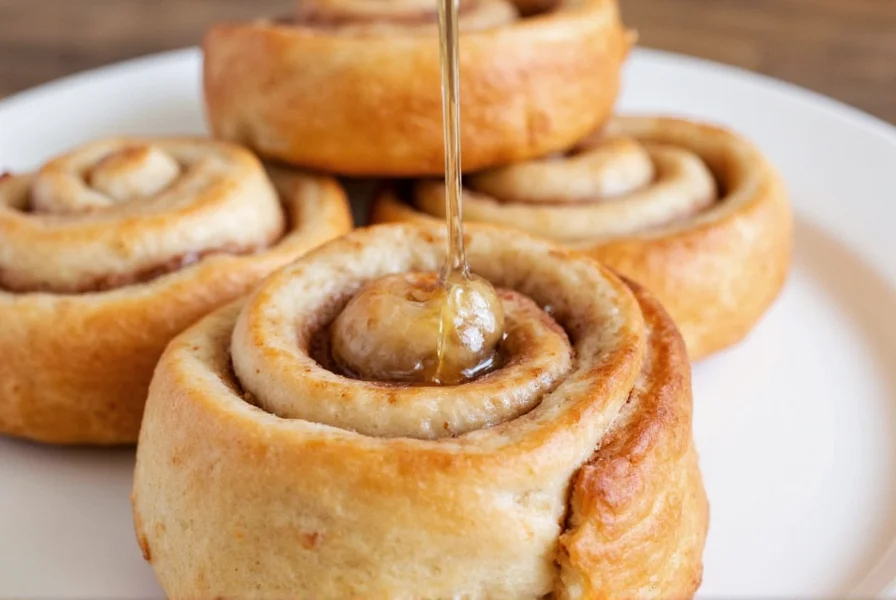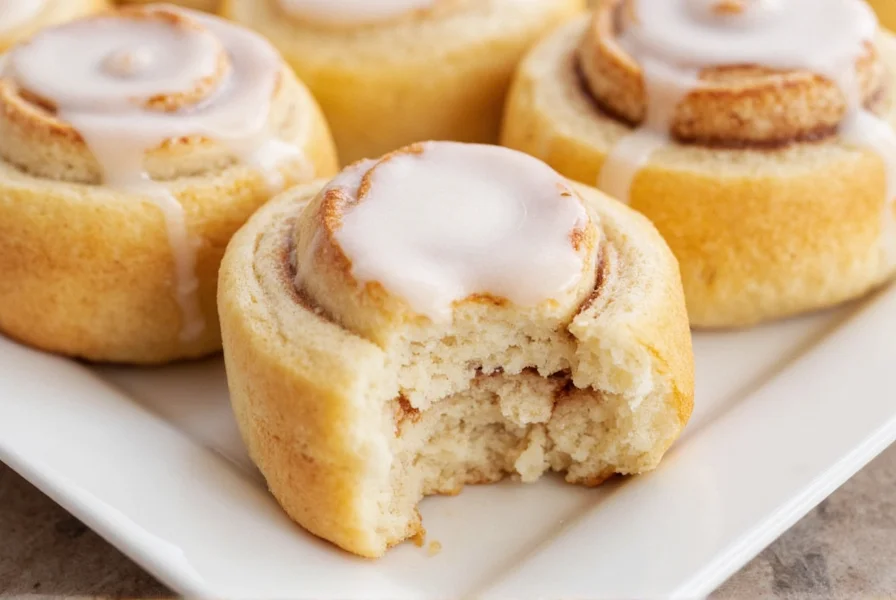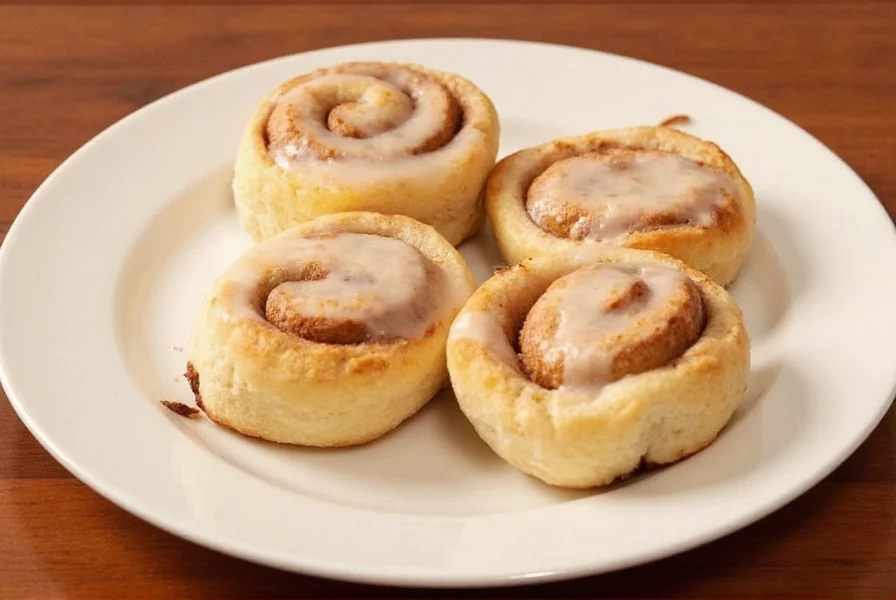The best homemade cinnamon roll recipe features a soft, fluffy yeast dough with a perfect balance of cinnamon-sugar filling and creamy cream cheese icing. This from-scratch recipe yields 12 perfectly golden rolls with a 30-minute active preparation time and 2-hour rise time. Key success factors include using fresh yeast, proper dough temperature (75-80°F), and not overbaking to maintain that signature soft texture. The secret to exceptional flavor? A brown sugar-cinnamon filling with a touch of nutmeg and a cream cheese icing that's neither too sweet nor too thin.
There's nothing quite like the aroma of freshly baked cinnamon rolls filling your kitchen on a weekend morning. While store-bought options exist, nothing compares to the tender texture and rich flavor of homemade cinnamon rolls made from scratch. This perfected recipe has been tested across multiple batches to ensure consistent results—light, airy dough swirled with a perfectly spiced filling and topped with a luscious cream cheese icing.
Why This Homemade Cinnamon Roll Recipe Works
Many cinnamon roll recipes promise perfection but fall short with dense dough or overly sweet icing. This version succeeds because of three critical elements:
- Yeast activation technique: Using warm milk (110°F) with a pinch of sugar creates the ideal environment for yeast to activate without killing it
- Dough hydration balance: The precise ratio of liquid to flour prevents dry, crumbly rolls or overly sticky dough
- Filling consistency: Melted butter in the filling ensures even distribution without making the dough soggy
Ingredients for Perfect Homemade Cinnamon Rolls
Accuracy matters in baking—use measuring cups designed for dry ingredients and a liquid measuring cup for wet ingredients.
| Category | Ingredients | Measurement |
|---|---|---|
| Dough | All-purpose flour | 4½ cups (562g) |
| Warm whole milk | 1 cup (240ml) | |
| Active dry yeast | 2¼ tsp (7g) | |
| Unsalted butter, melted | ⅓ cup (75g) | |
| Filling | Brown sugar, packed | ¾ cup (150g) |
| Cinnamon | 2 tbsp | |
| Melted butter | ¼ cup (60g) | |
| Icing | Cream cheese, softened | 4 oz (113g) |
| Powdered sugar | 1 cup (120g) | |
| Vanilla extract | 1 tsp |
Step-by-Step Instructions for Homemade Cinnamon Rolls
Preparing the Dough
- In a small bowl, combine warm milk (110°F), 1 tbsp sugar, and yeast. Let sit for 5-7 minutes until foamy.
- In a stand mixer with dough hook attachment, combine 2 cups flour, melted butter, egg, and yeast mixture.
- Mix on low speed while gradually adding remaining flour until dough pulls away from sides.
- Knead for 5 minutes until smooth and elastic. Dough should be slightly tacky but not sticky.
- Place in greased bowl, cover with damp cloth, and let rise in warm place for 1-1.5 hours until doubled.

Creating the Filling and Shaping
- Roll risen dough into 18x12 inch rectangle on floured surface.
- Evenly brush melted butter over dough, leaving ½ inch border on one long edge.
- Mix brown sugar and cinnamon, then sprinkle evenly over buttered dough.
- Tightly roll dough starting from the long edge, pinching seam to seal.
- Cut into 12 equal pieces using dental floss for clean cuts (prevents squishing).
- Place rolls in greased 9x13 inch pan, cover, and let rise 30-45 minutes until puffy.
Baking and Icing
- Preheat oven to 350°F (175°C) while rolls finish rising.
- Bake for 22-25 minutes until golden brown (avoid overbaking for soft texture).
- While baking, beat cream cheese icing ingredients until smooth.
- Cool rolls 10 minutes before icing to prevent melting.
- Spread icing evenly over warm rolls.

Pro Tips for Cinnamon Roll Success
Even experienced bakers encounter issues with cinnamon rolls. These professional tips ensure perfect results every time:
- Dough temperature matters: Keep dough between 75-80°F during rising. Too cold slows yeast; too hot kills it.
- Avoid dense rolls: Don't add too much flour when rolling. The dough should feel soft and supple.
- Prevent filling leakage: Leave a small border on one edge when spreading filling and seal the roll tightly.
- Test for doneness: Rolls are done when internal temperature reaches 190°F on an instant-read thermometer.
- Make ahead option: Prepare rolls through step 11, refrigerate overnight, then let rise 1-2 hours before baking.
Popular Variations to Try
Once you've mastered the classic recipe, experiment with these delicious twists:
- Apple cinnamon rolls: Add ½ cup finely diced apples to the filling
- Sticky buns: Place chopped pecans and ¼ cup maple syrup in the bottom of the pan before adding rolls
- Orange glaze: Replace vanilla in icing with orange zest and 1 tbsp orange juice
- Whole wheat option: Substitute 1 cup all-purpose flour with white whole wheat flour
- Vegan version: Use plant-based milk, vegan butter, and replace egg with ¼ cup unsweetened applesauce
Storing and Reheating Instructions
Homemade cinnamon rolls are best enjoyed fresh but can be stored properly:
- Room temperature: Store covered for up to 2 days (without icing)
- Refrigerated: Keep in airtight container for up to 5 days
- Freezing: Wrap individual rolls tightly and freeze for up to 3 months
- Reheating: Microwave 15-20 seconds or warm in 300°F oven for 5 minutes
Frequently Asked Questions
Can I make homemade cinnamon rolls without yeast?
Yes, you can create a quick bread version using baking powder instead of yeast. Replace the yeast dough with a biscuit-style dough made with 2 cups flour, 1 tbsp baking powder, ¼ tsp salt, ⅓ cup cold butter, 1 cup milk, and 2 tbsp sugar. Roll out, add filling, and bake at 400°F for 15-18 minutes. The texture will be more like a scone than traditional yeast rolls.
Why did my cinnamon roll dough not rise properly?
Common reasons include expired yeast, liquid that was too hot (killing yeast) or too cold (not activating it), insufficient rising time, or a drafty environment. Always test yeast in warm liquid with sugar first—properly activated yeast will foam within 5-7 minutes. Ideal rising temperature is 75-80°F in a draft-free location.
How can I prevent my cinnamon rolls from becoming dry?
Avoid overbaking (remove when internal temperature reaches 190°F), don't add excess flour to the dough, and apply icing while rolls are still warm. Proper dough hydration is critical—measure flour correctly by spooning into measuring cups and leveling off (don't scoop directly). The rolls should feel soft and supple, not stiff, when rolled out.
Can I prepare cinnamon rolls ahead of time?
Yes, you can prepare cinnamon rolls through the shaping step, then cover and refrigerate overnight. The next morning, let them rise at room temperature for 1-2 hours until puffy before baking. Alternatively, bake them completely, cool, then freeze. Reheat from frozen in a 300°F oven for 10-15 minutes before icing.
What's the secret to a smooth cream cheese icing that doesn't curdle?
Ensure all ingredients are at room temperature before mixing. Beat the cream cheese thoroughly until completely smooth before adding powdered sugar. Add liquid ingredients (milk or cream) one teaspoon at a time until desired consistency. Never apply icing to hot rolls—wait at least 10 minutes after baking to prevent melting and curdling.











 浙公网安备
33010002000092号
浙公网安备
33010002000092号 浙B2-20120091-4
浙B2-20120091-4